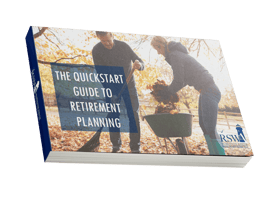Last week, news broke that Silicon Valley Bank (SVB) had become insolvent due to depositors pulling funds from the bank at a rapid rate, forcing SVB to sell sizable investments at a loss. Ultimately, SVB was unable to come up with the cash needed to provide liquidity to their clients. For a more in-depth recap of SVB’s failure, read our communication from Monday here RSWA.
For this newsletter, we wanted to focus on how we got here and what happens next.
How did we get here? As almost every event over the past three years has, this story begins in early 2020 in response to the COVID 19 pandemic. In March of 2020, the Fed cut interest rates down to 0% to ease pressure on the economy. CNBC For the following two years, the Fed kept interest rates at that 0% level to stimulate growth and investment in the US economy. With access to capital at virtually no cost, businesses grew at a rapid rate. Perhaps the biggest beneficiaries of this growth were venture capital backed companies, many originating in the tech focused Silicon Valley area. With this new influx of cash, these young start-up companies needed a place to store their funds. Enter Silicon Valley Bank.
Over the course of 2022 and into 2023, the Federal Reserve raised interest rates from 0% to over 4.5%. This sharp rise in interest rates led bond investments to go down in value at a pace never seen before. Not unlike many bond investors, SVB took a sizable hit on their bond portfolio. While the losses were all on paper, it was no issue. But once they were forced to liquidate these underwater positions to fund client withdrawals, they had to realize those losses and were ultimately run out of business.
So, where do we go now? Many market commentators had similar takes on the Fed’s actions through 2022 – “They will keep raising interest rates until something breaks.” Well, something broke. Now what?
It is impossible to know exactly what will come of these recent events (a bank run certainly wasn’t on many people’s bingo card for 2023), and there are certainly things to be on the lookout for.
- The Fed & interest rate hikes – The Federal Reserve is set to meet next week to discuss the potential of more interest rate hikes. Before the recent events, market participants were anticipating an increase of up to 0.50%. The Fed remains focused on tamping down inflation but now has the added challenge of preventing more bank crises. WSJ Lost in the news of this week, fresh CPI data came out Tuesday showing a year-over-year increase of 6% and 0.4% in February, meaning the Fed’s fight against inflation is not done. Investors are now expecting the Fed to raise rates one last time by 0.25% and then be done. Make sure to read next week’s newsletter to find out what the Fed decides to do and what their comments are.
- Banks lending & credit tightening – One outcome that seems almost certain is that banks will be more cautious with their lending and keep more cash on hand to ensure their solvency. This slow down in lending is exactly what the Fed has been trying to accomplish with high interest rates. Individual banks will now be doing the Fed’s job for them. It is important to note that this also increases the likelihood of recession.
- The future of banking regulation/reform – As with nearly every financial event, elected officials in DC will certainly have discussions regarding banking regulations and a potential reform. The US government has already had to step in by providing access to liquidity for US banks, making depositors at SVB whole on their deposits, and pledging to go further if needed.
We could use the entirety of this newsletter to dive into the happenings over the past week. I will save you from that. Instead, here are some additional resources that go into greater detail.
- WSJ podcast – What’s News WSJ
- Plain English – Silicon Valley Bank Collapse FAQ The Ringer *Just a heads up, some explicit language is used in this podcast
- Dan Davies On What Brought Down Silicon Valley Bank Bloomberg Podcast
- The Demise of Silicon Valley Bank – Marc Rubinstein blog
- How Does A Bank Collapse in 48 Hours? A Timeline of the SVB Fall CNN
Financial Planning Corner:
FDIC Insurance – What is it and how does it work? Federal Deposit Insurance Corporation (FDIC) insurance has been around since 1933 and is designed to give consumers confidence in putting their money in US banks by backing their deposit with the full faith and credit of the US government. Banks insured by FDIC pay premiums to ensure funds are available when needed. Most people know the $250,000 coverage limit, but an individual can have much more coverage than that. This limit is per depositor, per insured bank, for each account ownership category (full list of account categories here). For example, a couple could easily have $1m in coverage at one bank – Spouse 1: single account with $250,000, Spouse 2: individual account with $250,000, Joint account with $500,000 ($250,000 coverage each since it is a different account registration).
As mentioned above, in the case of SVB, all depositors were made whole regardless of their account balance. There will undoubtedly be discussion around if this will be the new normal and if the US government will ever allow depositors to lose their funds, regardless of FDIC limits. NPR For now, we recommend operating under the assumption that anything above the $250,000 limit is not protected.
Does this change how I choose my banking relationship? With the government taking steps to do whatever it takes to stabilize the banking system and most experts believing that this is not a threat to the wider banking system, most consumers should feel safe about their bank deposits. However, there will certainly be questions that people will want answered before they decide where they want to park their money. Here are a few resources that may help:
- Advice for small businesses choosing a bank – CNBC
- What experts are saying about your money’s safety – CNBC
- Is my money safe? NYT
One month remaining to file your taxes: The deadline to file taxes is April 18, 2023. There is still time to make contributions to Traditional and Roth IRAs, HSAs, and SEP IRAs for 2022. Work with your accountant and financial advisor to make sure you are taking advantage of the deductions and credits available to you! Every Tax Deadline You Need to Know – Turbo Tax Here’s What You Need To Know Before You File This Year’s Return - CNBC
Ok, enough of the doom and gloom. It is time to celebrate! Happy St. Patrick’s Day!!

Quick Hits:
- How do you celebrate St Patty’s Day? Here are some ideas to help you celebrate! Parade - St Patrick's Day Traditions (I’m personally looking forward to #4)
- Corned beef and cabbage, not your thing? Here are some other traditional Irish foods to try Will Fly For Food Taste of Home
- It is Maple Season in New England! Find some events happening near you New England Dairy
- The Oscars were this past weekend. If you are like me and haven’t seen any of the movies that were nominated, here is where you can watch them to get caught up LA Times
National Women’s History Month: March is Women’s History Month, celebrating women’s contributions to history, culture, and society. International Women’s Day also occurred last week and is a global celebration of the economic, political, and social achievements of women across the globe. Take some time this month to reflect on and learn about women’s contributions to US history. Bold Women Who Changed The World womenshistorymonth.gov Women's History - womenshistory.org
Quote: “May your blessings outnumber the shamrocks that grow, and may trouble avoid you wherever you go.” Irish Blessing
Thank you for reading RSWA Financial Advisor Insights! We welcome feedback and please forward this to a friend! Be well, take care, and stay safe!
